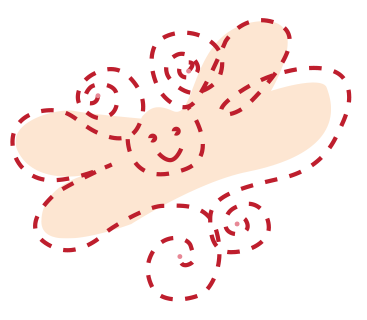Treatment Methods
Bobath Therapy for Children, Certified
Bobath Children (Neuro-Developmental Treatment NDT) is not a technology, but a holistic therapeutic concept.
It was developed by Berta (physiotherapist) and Karel (neurologist) Bobath. The neurophysiological development is supported, taking into account the special needs of the child, the circumstances, and the current state of development.
In contrast to other therapeutic concepts, in the Bobath concept, there are no standardized exercises but rather everyday related therapeutic activities are in the foreground. Thus, sensorimotor learning is favoured. For the child, motoric learning at home should be supported by environment design and assisted by various techniques. Primarily, infants and children with developmental abnormalities of any kind (following birth trauma, premature infants, neurological defects, developmental risks, any wryness, and asymmetry in infancy, syndromes …) are treated.
Three-dimensional Manual Foot Therapy by B. Zukunft-Huber
Three-dimensional manual foot therapy following the B. Zukunft-Huber method is based on the normal neurophysiological motor development. It integrates the entire body. With special stretching and bandage-wrapping techniques, the normal foot development is supported. For home treatment, the parents are instructed accordingly. It covers all types of foot deformities such as clubfoot, flatfoot, climbing foot.…
Sensory Integration by Jean Ayres — GSIÖ Certified
The Sensory Integration (SI) concept was developed by the occupational therapist and developmental psychologist A. Jean Ayres. This holistic concept is about the relationships between perception, movement, and learning. Our senses take in stimuli from the environment, which are stored and processed in our nervous system. Only when this process is working properly, we can adequately respond to our environment, learn, play, make social contacts, and move forward.
Signs for SI disorders can be attention deficits, language delay, coordination problems, hyperactivity and restlessness, anxiety, behavioural problems, learning difficulties, problems in finding game ideas or in implementing such.…
In the Sensory Integration Therapy, children learn with problems in perception processing, know the limits and possibilities of their body, and organize their behaviour. The therapy is playfully designed. The requirements are adapted to the child, so that they can learn through experiences of success and self-confidence is strengthened. SI is carried out mostly by occupational therapists. I see it as my task to incorporate elements of this concept in my therapy and pay attention to any problems in perception processing early on. If your baby or toddler has difficulties in the area of Sensory Integration Processing, it should be supervised by experienced occupational therapists with SI training.
Synergetic reflex therapy by Dr. Waldemar Pfaffenrot
Synergistic Reflexology is a gentle stretching technique based on a neurophysiological. It is used especially for patients with cerebral movement disorders (such as ICP, MMC, muscle diseases…). Muscle tone is reduced and the shortened muscles stretched with involvement of different reflex points.
Premature baby massage (Bruno Walter)
The baby massage takes place in a calm atmosphere. Through the loving touch and the various techniques, a healthy body feeling can be supported and digestion encouraged. Self-esteem, confidence, and well-being can be increased. The massage should be fun and convey the joy of movement and touch.
In contrast to full-term infants, premature babies often have difficulties processing touch and motion correctly. Therefore, they are often very restless or tense. Premature baby massage is nothing more than a slight variation on the baby massage, in order to better understand the special needs of pre-term infants and help them to relax. Particular attention is paid to hypersensitivity regarding tactile stimuli on the skin and changes in position.
Reflexology
In reflexology, it is assumed that in our body there is an associated reflex zone on the sole of the foot for each organ. The zone corresponds with the organ. The organ can be positively affected through the application of a pressure treatment to the zone. In infants, the reflex zones for the gastrointestinal tract are especially suitable to stimulate digestion and often very helpful for bloating and laboured bowel movements.
CranioSacrale Therapy (Upledger)
Craniosacral therapy developed in the second half of the 20th century. It is based on the teaching of osteopathy (bone healing).
Dr. William Sutherland demonstrated the physiological movement of the cranial bones of each person. Later, in the 1970’s Dr. John Upledger discovered that the skull was connected to the sacrum via the skin (Dura Mata) which lines the spinal cord canal. The name ‘Craniosacral’ was composed of the terms cranium (skull) and sacrum (sacrum). Der Name CranioSacrale
The Dura Mata changes its state of stress (caused by injuries, as well as physical and mental load), consequently through any trauma before, during or after the birth. Furthermore, it is assumed that the cerebrospinal fluid (the liquid in which the brain and spinal cord are embedded) has its own rhythm that can be felt.
This is where the craniosacral therapy is applied. It is a very gentle therapy technique performed mainly on the head and sacrum. Both are affected by of rhythm of the cerebrospinal fluid, and the voltage of the Dura Mata. The goal is the processing of trauma and thereby the achievement of relaxation and the enhancement of well-being.
Respiratory therapy for infants and young children
Because infants have a very soft chest and narrow airways, infections and secretions can quickly lead to breathing problems. Through certain handling techniques and vibrations on the chest, secretions can be mobilized and breathing deepened.
Kinesio taping
This is a technique, where adhesive tape is applied to the skin in known systems. The tape acts on receptors in the skin, muscles, and lymphatic system, depending on adhesive technology. It is suitable for pain reduction, but also to activate specific muscle groups or to relax.
